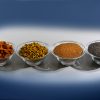The term cosmeceutical refers to a cosmetic product with the following characteristics:
– presence of active substances in the formulation
– achieved through a technology aimed at increasing the bioavailability of the active substance. For example through micronization, or through the presence of surfactants (substances which, dissolved in small quantities in a solution, considerably decrease the interfacial tension concerning the separation surface between the diluted solution and another solid, liquid or gaseous phase) .
These products cannot be classified as drugs, despite being based on highly active ingredients capable of penetrating the surface of the epidermis thanks to manufacturing technologies.
The technology with which Exenia is equipped, both as regards the extraction through supercritical CO2, and for the micronization of the extract powders, is suitable for the preparation of extracts and intermediate products, essential for formulating cosmeceutical products.
In fact, through these technological applications, we are able to produce valid intermediates for cosmeceutical products obtained from: myrrh exudate, calendula, lavender, blueberry, tomato, marc, almonds, hazelnuts, rice husk and from iris.
Thanks to these technological applications we can therefore obtain intermediates for cosmeceutical products that can improve the appearance of expression lines, even if they do not completely eliminate them. In fact, improving appearance is an aesthetic claim, while eliminating wrinkles is a functional claim. Cosmeceuticals can therefore claim to make the skin more luminous and to uniform its color, but they cannot claim the treatment of abnormal skin pigmentation. In fact, a product for the treatment of abnormal pigmentation is to be considered a drug in all respects.
Undoubtedly Cosmeceuticals represent the future of cosmetics, however some negative aspects should not be underestimated, such as the fact that some plant species contain metabolites to be considered irritating or allergenic.


